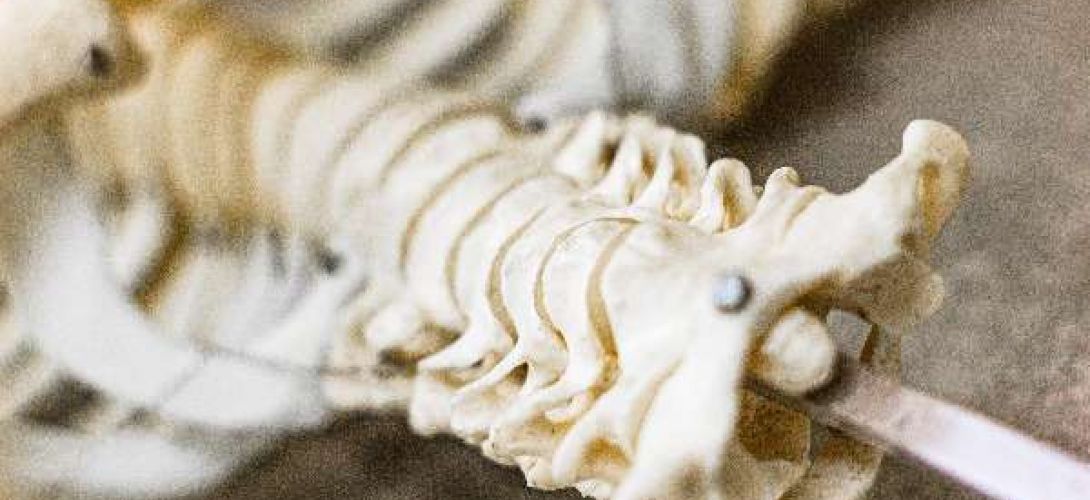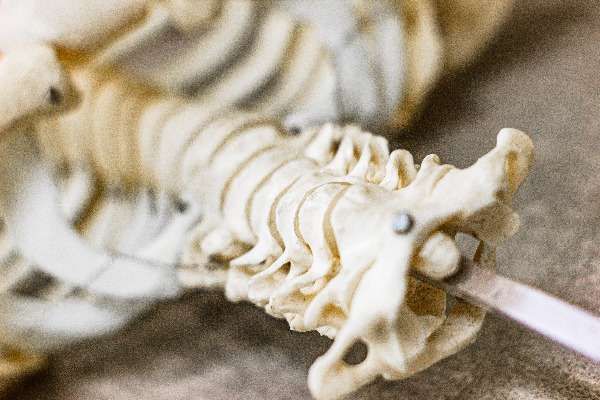
What is a Grade 3 Soft Tissue Injury?

What is a Grade 3 Soft Tissue Injury?

Soft tissues help to surround, protect, and bind the structures in your body, such as muscles, nerves, ligaments, and tendons, all examples of soft tissues. Damage to any of these components, resulting in pain, swelling, irritation, or a loss of mobility, is referred to as a soft tissue injury.
The cause of these injuries may range in severity and seriousness, and some, of course, are much worse than others regarding pain and the possibility of disability.
Grade 3 Soft Tissue Injuries
Soft tissue injuries get divided into two categories depending on the seriousness of the injury and how it occurred, which we discuss here. So, if you were seriously injured in a car accident, Michael Ehline and the team at the Ehline Law Firm can help you today.
Types of Soft Tissue Injuries
Based on the severity of an injury a soft tissue injury can get categorized as either a Grade 1, Grade 2, or Grade 3 injury based on its severity. This categorization of soft tissue injuries allows us to understand better how much damage got done to an individual and how serious the injury should get taken—classifying all soft tissue injuries as the same would be foolish in a sense as it would allow for the proper assessment of the injuries sustained by the individual involved in the accident that caused these injuries in the first place.
Grade 1 Injuries
When the tissue fibers become overstretched, this is the least serious form of soft tissue injury. Grade 1 injuries normally only impact a small portion of the soft tissue fiber, making for a quicker and smoother recovery over a few days or weeks. Mild swelling and tenderness in the injured area are common symptoms.
Grade 2 Injuries
A Grade 2 injury is significantly more serious than a Grade 1 injury. It causes a partial tear of the soft tissue fibers, but the tissue remains intact. Swelling, tenderness, and discomfort are more noticeable, and recovery time can be much longer than for a Grade 1 injury. A Grade 2 injury can take anything from a few weeks to a couple of months to heal.
Grade 3 Injuries
The most serious injury is a Grade 3 injury. It entails a complete soft tissue breakup. There is much more swelling than with Grade 1 or Grade 2 injuries and a lot of stiffness in the affected joint structure. A Grade 3 injury gets described by the inability to use the injured limb. Depending on the structure that got injured as well as the type and severity of the injury, recovery should take anywhere from six weeks to a year.
Causes of Soft Tissue Injuries
Numerous events can occur to cause soft tissue injuries. There are two rather broad categories that they can get broken down into. These two categories are acute injuries and overuse injuries. The way that these two types of injuries occur is very different, and as a result, they should get treated individually.
Acute Injuries
A sudden trauma typically causes these injuries to the affected area. They often occur in sporting incidents or accidents. There are a number of terms that may sound more familiar to you when talking about these injuries: sprains, strains, and contusions.
These terms classify the types of acute common soft tissue injuries.
- Contusions: These injuries, often referred to as bruises, are often the result of a sudden or sustained blunt force to soft tissue, such as a fall or getting hit. These acts cause swelling and bleeding under the skin, resulting in the characteristic black and blue discoloration around the injury site.
- Strains: A strain occurs when a muscle or the tendon that connects the power to the bone gets injured. This form of injury is common in contact sports and sports involving many explosive motions, such as abrupt starts and stops. Repeated sprains cause serious muscle weakness in the affected area and cramping and spasms.
- Sprain: Sprains are identical to strains except for one major difference. An overstretch or tear of a ligament, the soft tissue that connects two bones causes these injuries. Joint systems get stabilized by these structures. When performing such movements that place pressure on the damaged ligament, any injury may result in a loss of joint flexibility and pain. Sprains are most often triggered by abrupt movements of a joint when under stress, such as twisting the ankle.
Overuse Injuries
Overuse injuries occur when a movement or action gets repeated over a long period without allowing the body to heal itself. Tendinitis or bursitis may develop if you continue to stress a soft tissue without allowing it to heal after the action.
You would much rather avoid these injuries than have to deal with them, and they often result in pain and inflammation.
- Bursitis: Bursae are tiny fluid-filled sacs found between bones and soft tissue all over the body. They aid in the reduction of bone-to-soft-tissue friction. When a bursa becomes inflamed, it causes inflammation and pain, and if not treated, it may lead to more soft tissue injury. This can get triggered by putting too much pressure on a joint for too long.
- Tendinitis: Tendinitis is a condition in which the tendons become inflamed. It’s caused by cumulative stresses that build over time and gradually weaken the tendon. Pain and swelling are common symptoms, and they can prohibit you from doing most things that require you to use the injured tendon. Tendinitis in the arms and shoulders is common among basketball and racket sports players, while tendinitis in the legs is common among football players and marathon runners.
How a Soft Tissue Injury Gets Treated
The RICE technique is the traditional first-aid treatment for nearly all cases of these injuries. For the first 48 to 72 hours, the RICE treatment includes resting, icing, compressing, and elevating the damaged soft tissue. These four measures aid in relieving pain and inflammation and preventing further injury to the injured region.
The remainder of your condition may get determined by the type and nature of your soft tissue injury. The majority of muscle, ligament, and tendon injuries recover over time. Specific strengthening and stretching exercises may help to reinforce these soft tissues and keep them from getting injured again. Surgical intervention may be required for severe injuries like a full-structure tear.
Over time, contusions appear to heal on their own. Following the RICE protocol should help you recover faster. However, it is best to speak with a doctor to prevent permanent injury. Anti-inflammatories get used to treat bursitis and reduce swelling. A doctor can prescribe procedures to remove the fluid accumulated in the bursa, depending on the location and severity of the injury. Alternatively, they can administer a corticosteroid injection to the patient to alleviate swelling and pain.
Surgery usually is only used as a last resort. If the pain continues following non-invasive procedures, doctors would generally prescribe surgery.
When to See a Doctor
After an injury, no matter how minor it may seem, it is always a good idea to thoroughly examine it. Some injuries are more severe than their apparent signs suggest. After analyzing the outcomes of multiple medical tests, a doctor is in the best place to prescribe the appropriate care. If your symptoms continue and do not change within the timeline indicated at your previous appointment, you should see a doctor again.
If you have a soft tissue injury and are considering filing a compensation claim, seeing a doctor should help your attorney bring your claim together.
Treating Your Injury on Your Own
Should you sustain an injury relating to joint soft tissue, you can do several things to alleviate the pain and assist the muscles, tendons, and ligaments in recovery. Rest, ice, compression, and elevation are the best ways to deal with sprains, strains, and similar injuries. Should you have a Grade 1 injury, your doctor would likely prescribe rest, ice compression, and elevation as the best way to allow the muscle’s tendons to recover appropriately.
These methods improve blood flow to the connective tissue and provide sufficient time to heal. It is essential to give all these connective tissue injuries enough time to recover to prevent further damage. If a more serious injury occurs, treatment such as physical therapy may be necessary. So, you may consider this treatment if you have any mild to severe symptoms relating to a ligament or sports injury. This treatment allows for complete recovery without the risk of a recurring injury.
Contact the Ehline Law Firm
Should your injury get caused by someone else, you may want to consider a Los Angeles spinal cord injury attorney to fight the case for you. Our legal services can give your significant subject weight and ensure you get the best settlement offer. You can contact us to get a free consultation today. Contact us either through our website or via phone call.
You can phone us by dialing (213) 596-9642 or request an online consultation for a faster response. We can provide you with an experienced and aggressive attorney who works for Ehline Law Firm, which has won over $150 million for numerous satisfied clients.
Categories
- A to Z Personal Injury Podcast
- Car Accident
- Government Tort Blog
- Insurance Law Blog
- Piloting and Aviation Accident Blog
- Premises Liability Blog
- Products Defect Blog
- Recreation-Sports Accident Blog
- Reports
- Service Related Cancer Blog
- Sexual Assault Blog
- Spinal Cord Injury Blog
- Torts, Examples, Explanations
- Train Accidents Blog
- TV, Media & Firm News
- Uncategorized
Firm Archive
Main Los Angeles Location


Michael Ehline
Michael Ehline is an inactive U.S. Marine and world-famous legal historian. Michael helped draft the Cruise Ship Safety Act and has won some of U.S. history’s largest motorcycle accident settlements. Together with his legal team, Michael and the Ehline Law Firm collect damages on behalf of clients. We pride ourselves on being available to answer your most pressing and difficult questions 24/7. We are proud sponsors of the Paul Ehline Memorial Motorcycle Ride and a Service Disabled Veteran Operated Business. (SDVOB.) We are ready to fight.
